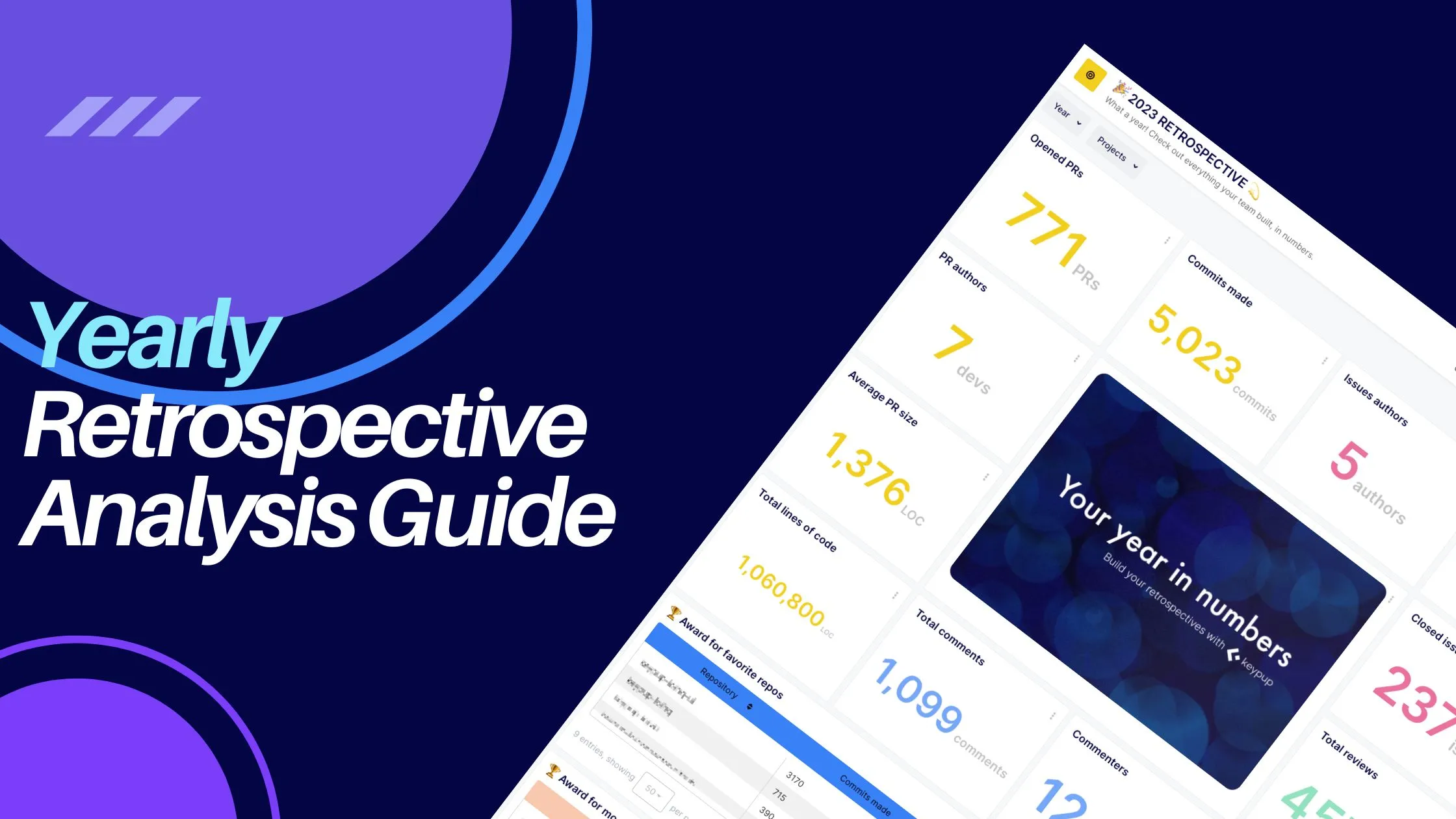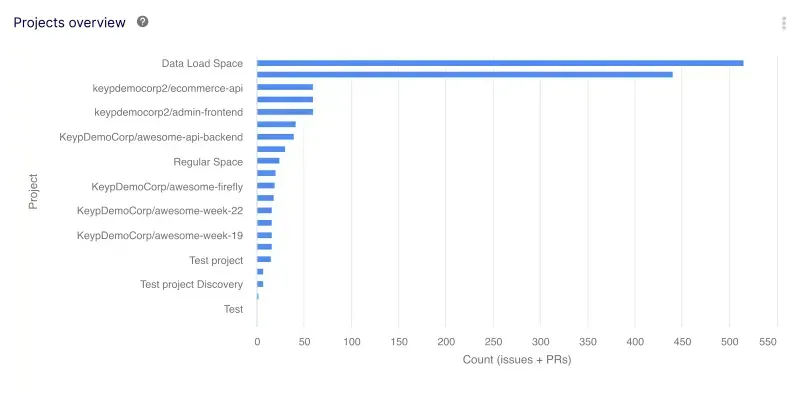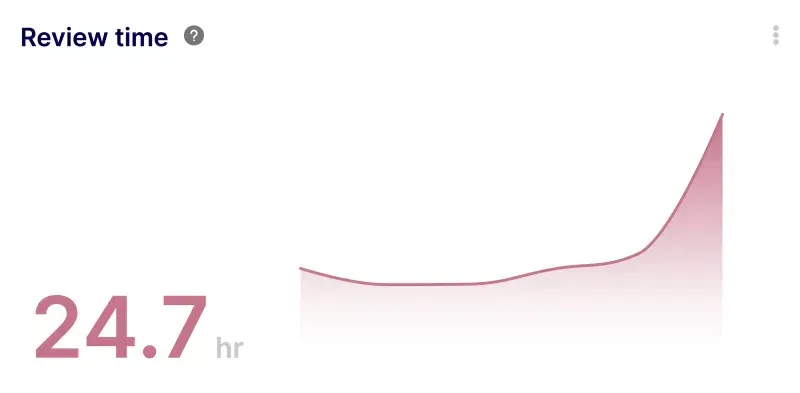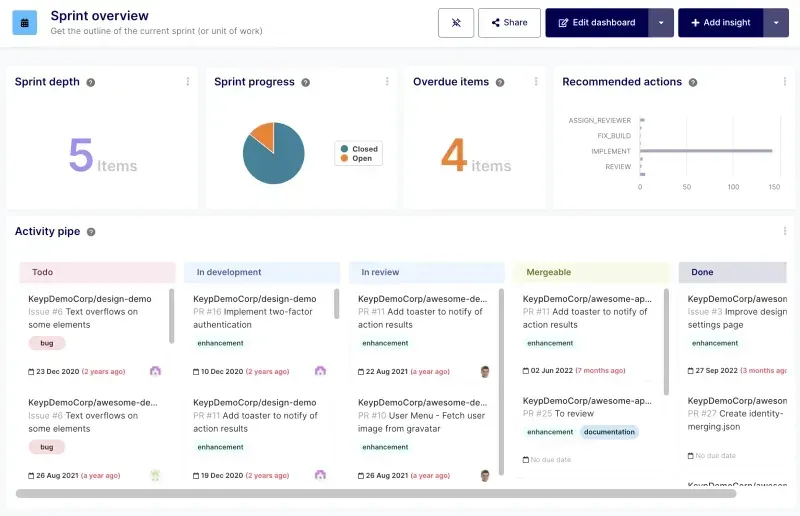Reflect and Evolve: The Crucial Role of Retrospective Analysis in Software Engineering



In the realm of software engineering, the pursuit of excellence is a journey, not a destination. This journey is punctuated by a critical process known as retrospective analysis — a reflective practice where teams systematically review and reflect on completed projects, development cycles, or periods (year, quarter, and month). Retrospective analysis stands as a cornerstone in the complex architecture of software development, offering time to pause, evaluate, and strategize.
In our rapidly evolving tech industry, where change is the only constant, the importance of retrospective analysis has magnified. It is no longer a luxury but a necessity. As projects become more dynamic and teams more distributed, the need to periodically look back and glean insights has become paramount. This practice not only illuminates the path traversed but also casts a light on the road ahead, guiding teams toward improved performance, enhanced collaboration, and innovative problem-solving.
Retrospective analysis transcends the mere examination of what went good or wrong; it's an opportunity to celebrate successes, recognize challenges, and collectively commit to actionable improvements. In an era where Agile methodologies reign and continuous delivery is the goal, such retrospectives become the pulsating heart of a team's continuous improvement ethos. They serve as a vital feedback mechanism, ensuring that teams are not just moving fast, but also moving in the right direction.
Thus, as the tech world accelerates and the landscape of software engineering continually shifts, embracing retrospective analysis is not just about keeping pace and counting closed tickets; it's about setting the pace, staying ahead, and carving a path to enduring excellence in an ever-competitive domain.
As you delve into this article, you’ll uncover the transformative impact of retrospective analysis. It's an exploration of how this practice can guide teams toward enhanced performance and maintain a competitive edge.

Retrospective analysis in software development is a comprehensive process where teams reflect on the entirety of the past year's (or quarter’s) activities. It involves a collective examination of what was achieved over an extended period, encompassing multiple projects or development cycles. This analysis transcends mere problem-solving; it's a dedicated opportunity for teams to discuss processes, tools, behaviors, and methodologies employed throughout the entire year.
Traditional project reviews often focus on evaluating specific outcomes against predefined goals, typically at the end of a single project. In contrast, retrospective analysis for yearly review delves deeper. It’s not only about assessing whether the team met specific project specifications or deadlines; it’s about evaluating how the team functioned over the longer term, the challenges faced across different projects, and the key learnings amassed throughout the entire year.

Unlike traditional reviews, which are usually final evaluations at the end of a project, annual retrospective analysis is a holistic process. It provides a comprehensive view of the year's work, offering insights into the team's evolution over time. This annual reflection helps in fostering a culture of continuous improvement, encouraging teams to refine their practices and processes based on a year-long perspective.
Retrospective analysis, especially when conducted annually, focuses on the team's collective journey rather than just individual performances. It offers a space for open dialogue, shared learning, and mutual understanding. This collaborative approach is key in building a stronger, more cohesive team, as it considers the integrated efforts and experiences of the entire group over the course of the year.
Yearly retrospective analysis in software development is a powerful tool for understanding a team's comprehensive performance over an extended period. By systematically examining key performance indicators (KPIs) such as open and closed issues, pull requests, and code contributions, teams can gain a holistic understanding of their productivity and efficiency. This process enables a deep dive into not only what was achieved but also how it was accomplished, providing a full spectrum of insights into team dynamics and project execution.

One of the critical outcomes of such an analysis is the ability to identify patterns and trends that emerge over the course of the year. By evaluating metrics like code review turnaround times and the volume of code produced, teams can pinpoint areas where processes can be optimized for better outcomes. This comprehensive review turns past challenges into learning opportunities, allowing teams to understand and address the underlying causes of any issues.

Yearly retrospectives also play a vital role in strategic planning and team development. By analyzing metrics related to collaboration, such as the number and nature of discussions in pull requests or issues, teams can assess and enhance their communication and problem-solving strategies. This fosters a culture of continuous improvement, where teams are not only focused on what they deliver but also on how they can grow and evolve in their processes and interactions.
In Agile methodology, retrospective analysis transcends being a mere component; it is foundational for continuous evolution. Agile frameworks emphasize adaptability and improvement, and retrospectives are key to realizing these principles. They provide structured moments at the end of development cycles for teams to pause, reflect, and strategize for more effective and efficient practices in future iterations.

Retrospectives within Agile act as a crucial bridge between past performance and future enhancements. These sessions offer teams the opportunity to reflect on their recent work with an eye toward refining their approach in subsequent cycles. This ongoing cycle of reflection and adaptation is what keeps an Agile team dynamic, ensuring each sprint is an opportunity for growth and improvement.
Retrospective analysis in Agile methodologies synergizes with other Agile practices like standups and sprint reviews. While daily standups focus on immediate progress and challenges, retrospectives provide a comprehensive review of longer periods, offering insights into overarching trends and patterns in team performance and project execution. This contrast allows for a more balanced and thorough approach to project management and team development.

Retrospectives are instrumental in strengthening team communication and dynamics. These sessions offer a forum for open, honest discussion, allowing team members to voice their experiences, concerns, and suggestions. This level of engagement is essential for fostering a collaborative environment where every team member feels valued and heard. By focusing on both the process and the people behind it, retrospectives help create a more cohesive and effective team.
A critical aspect of conducting an effective yearly retrospective is the reliance on data-driven insights. By examining a full year's data, teams can gain a comprehensive view of their performance. This includes analyzing metrics like total commits, issue resolutions, and pull request activities. Such an approach allows for an objective assessment of the year’s achievements and challenges, providing clarity on long-term trends and outcomes.

Yearly retrospectives that utilize extensive data help move discussions from subjective perceptions to measurable facts. By evaluating year-long metrics, teams can identify specific successes and areas needing improvement. This approach ensures that annual reviews are grounded in reality, focusing on actual performance and productivity indicators.
For yearly retrospectives to be impactful, they must lead to strategic, actionable plans. This involves setting clear, attainable goals based on the year’s insights, ensuring that identified challenges are addressed and successes are built upon. These actions should be specific and time-bound, promoting accountability and effective implementation.
Monitoring the outcomes of actions taken after yearly retrospectives is crucial for sustained development. This involves assessing the impact of these actions on future projects or workflows. Such a practice emphasizes the ethos of continuous improvement, allowing teams to recognize the effectiveness of their strategies over time and make necessary adjustments.

Inclusive participation is essential for successful yearly retrospectives. Encouraging input from all team members ensures a holistic view of the year's work. This diversity of perspectives leads to more comprehensive and effective year-end strategies, as different viewpoints and experiences are considered.
Creating a balanced and equitable environment for retrospective discussions requires intentional effort. This may involve structured discussion formats or feedback mechanisms that ensure all voices are heard. Such inclusivity is key to developing a culture that values every team member’s contribution to the year’s successes and challenges.
A significant challenge in conducting yearly retrospectives is managing the extensive scope within limited time. Teams often struggle to cover a year's worth of development activities without impacting ongoing projects. This balancing act requires careful planning and time management.

To mitigate time constraints, it's crucial to integrate retrospectives seamlessly into the annual cycle as a key component rather than an afterthought. Prioritizing efficient and focused sessions, possibly by breaking them down into thematic areas or key metrics, can enhance productivity. This approach ensures that discussions are both comprehensive and time-efficient, covering all critical aspects of the year’s activities.
Another hurdle is securing active participation from all team members, particularly in a retrospective that covers such a broad timespan. In larger teams or in the presence of dominant personalities, some members may hesitate to share their insights.
Encouraging a culture where every opinion is valued and heard is key. Employing techniques like structured feedback sessions or smaller focus groups can facilitate more equitable participation. Setting clear expectations for the importance of each member's input is also essential to foster a collaborative and engaged environment during these annual reflections.
Bias in retrospective analysis, especially when reviewing an entire year, can significantly affect the objectivity and effectiveness of the outcomes. Biases may arise from established perceptions, dominant voices, or homogeneous viewpoints.

Combating bias requires a deliberate approach to ensure objectivity. Facilitators should encourage diverse perspectives and challenge established assumptions. Employing data-driven approaches, where decisions and discussions are grounded in tangible metrics and facts, can help in maintaining a focus on actual performance indicators. Rotating facilitators or incorporating anonymous feedback mechanisms can also be effective in bringing diverse insights and reducing bias in annual retrospective analyses.
In an era where technology is at the forefront of almost every aspect of business, leveraging specialized tools for retrospective analysis has become increasingly important. Tools like the Engineering Retrospective Dashboard are designed to augment the traditional retrospective process, offering a more streamlined, efficient, and data-driven approach.

One of the significant advantages of using these tools is their ability to simplify data gathering. Instead of manually compiling reports and metrics, tools like the Engineering Retrospective Dashboard automatically aggregate data from various sources, including code collaboration platforms and project management tools. This automation saves time and ensures that teams have access to the most relevant and up-to-date information.
Another key benefit is the enhanced visualization of data these tools provide. Complex data sets are transformed into clear, easy-to-understand graphs and charts, making it easier for teams to identify trends, patterns, and areas that require attention. This visual aspect can make discussions more engaging and informative, allowing for deeper insights.
Specialized tools also excel in tracking progress over time. They allow teams to measure the impact of the actions taken post-retrospectives. By comparing data across multiple sprints, projects, or periods, teams can clearly see whether the changes they’ve implemented are yielding positive results. This feature is crucial in validating the effectiveness of the retrospective process and guiding future improvements.
Using these tools also promotes accountability within the team. When actions and their outcomes are tracked and visible to all team members, it encourages a sense of responsibility and commitment to continuous improvement.

The Engineering Retrospective Dashboard exemplifies how specialized tools can revolutionize the retrospective process. By providing comprehensive analytics, intuitive data visualization, and progress tracking, it empowers teams to conduct more effective and impactful retrospectives. This tool is not just a facilitator of retrospectives; it’s a catalyst for ongoing development and excellence in software engineering.
Retrospective analysis in software engineering is more than a practice — it's a catalyst for growth and improvement. As we've explored, this process plays a crucial role in identifying and learning from past challenges, enhancing team dynamics, and fostering a culture of continuous improvement, particularly in Agile environments. By focusing on data-driven insights, actionable takeaways, and inclusive participation, retrospective analysis becomes a powerful tool in the arsenal of any software development team.
The integration of retrospective analysis into your workflow is not just a step toward refining processes — it's a commitment to excellence and team development. Whether it's overcoming common obstacles like time constraints and participant engagement or leveraging technology to streamline the process, each aspect of retrospectives contributes to a deeper understanding and better performance.
We invite you to explore the Engineering Retrospective Dashboard and see for yourself how it can transform your retrospective process. Discover the ease of data-driven retrospectives, the clarity of visual analytics, and the benefits of tracking continuous improvement. It's time to elevate your team's retrospectives from good to great.
Explore the 2023 Engineering Retrospective Dashboard Now
Embrace the change, empower your team, and lead the way to a future of informed, data-driven decisions and continuous development.


What is retrospective analysis in software development?
Retrospective analysis is a process where teams systematically review and reflect on their completed projects or development periods (year, quarter, or month), focusing on processes, tools, behaviors, and methodologies used.
How does retrospective analysis differ from traditional project reviews?
Unlike traditional project reviews that focus on specific outcomes against predefined goals, retrospective analysis delves deeper, assessing team function over the long term, challenges faced, and key learnings throughout the year.
Why is retrospective analysis important in the tech industry?
In the rapidly evolving tech industry, retrospective analysis is crucial for adapting to change, as it allows teams to learn from past experiences, enhancing performance, collaboration, and problem-solving.
What are the benefits of yearly retrospective analysis in software development?
Yearly retrospective analysis provides a comprehensive performance overview, helps identify patterns and trends, and fosters strategic growth and team development.
How does retrospective analysis fit within Agile methodology?
In Agile, retrospective analysis is foundational, providing structured opportunities for teams to reflect, learn, and plan more effective practices, thereby bridging past performance with future improvements.
What are some common challenges in conducting retrospectives and how can they be addressed?
Challenges include managing time constraints, ensuring active participation, and avoiding bias. Solutions involve efficient scheduling, fostering an inclusive environment, and employing objective, data-driven approaches.
How do retrospective tools enhance the analysis process?
Tools like the "2023 Engineering Retrospective Dashboard" augment retrospectives by simplifying data gathering, enhancing data visualization, and tracking progress over time, leading to more effective and impactful analysis.
How can retrospective analysis be integrated into a software development workflow?
Integrating retrospective analysis involves making it a regular part of the development cycle, focusing on data-driven insights, actionable takeaways, and inclusive participation to enhance team performance and development.